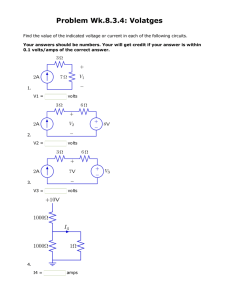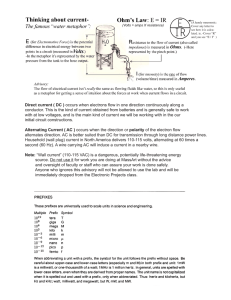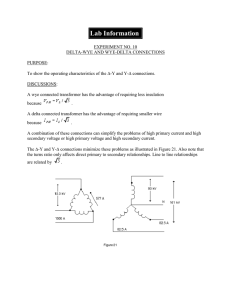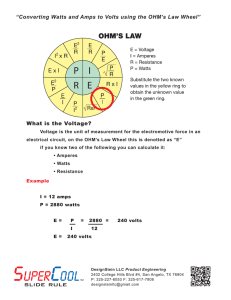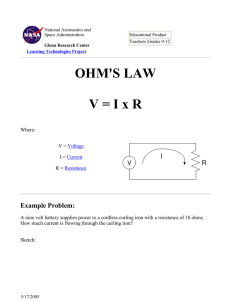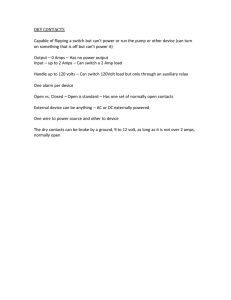difference between kVA and kW
advertisement
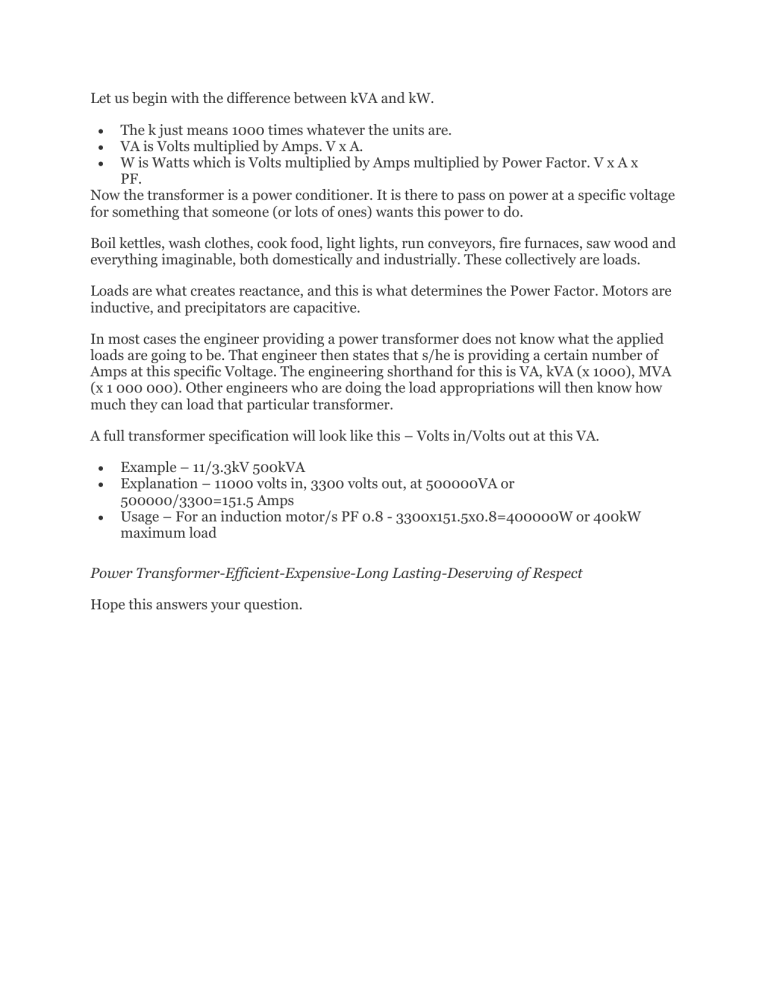
Let us begin with the difference between kVA and kW. The k just means 1000 times whatever the units are. VA is Volts multiplied by Amps. V x A. W is Watts which is Volts multiplied by Amps multiplied by Power Factor. V x A x PF. Now the transformer is a power conditioner. It is there to pass on power at a specific voltage for something that someone (or lots of ones) wants this power to do. Boil kettles, wash clothes, cook food, light lights, run conveyors, fire furnaces, saw wood and everything imaginable, both domestically and industrially. These collectively are loads. Loads are what creates reactance, and this is what determines the Power Factor. Motors are inductive, and precipitators are capacitive. In most cases the engineer providing a power transformer does not know what the applied loads are going to be. That engineer then states that s/he is providing a certain number of Amps at this specific Voltage. The engineering shorthand for this is VA, kVA (x 1000), MVA (x 1 000 000). Other engineers who are doing the load appropriations will then know how much they can load that particular transformer. A full transformer specification will look like this – Volts in/Volts out at this VA. Example – 11/3.3kV 500kVA Explanation – 11000 volts in, 3300 volts out, at 500000VA or 500000/3300=151.5 Amps Usage – For an induction motor/s PF 0.8 - 3300x151.5x0.8=400000W or 400kW maximum load Power Transformer-Efficient-Expensive-Long Lasting-Deserving of Respect Hope this answers your question.
